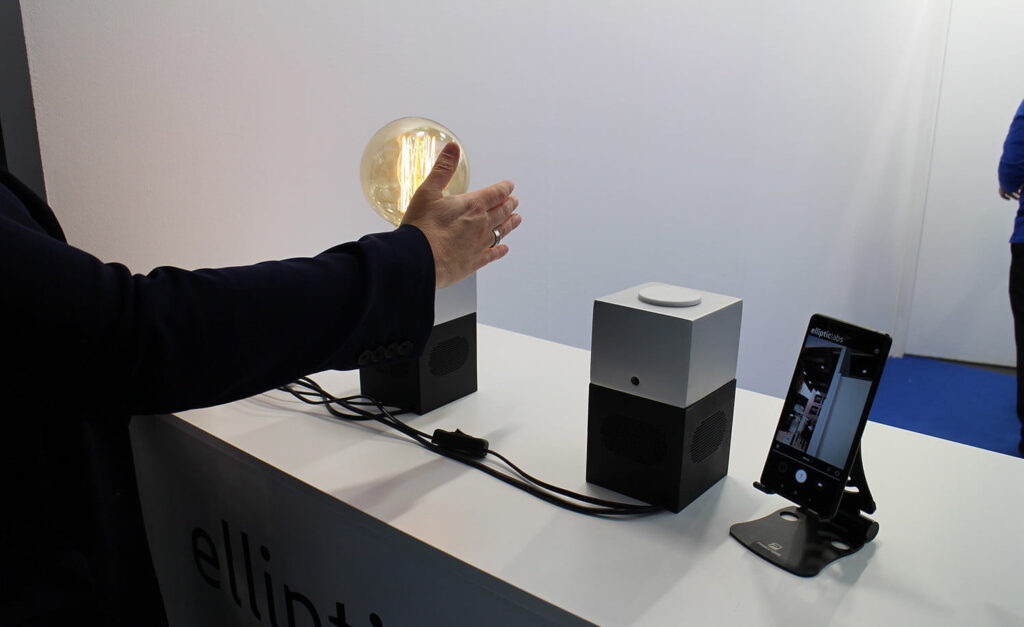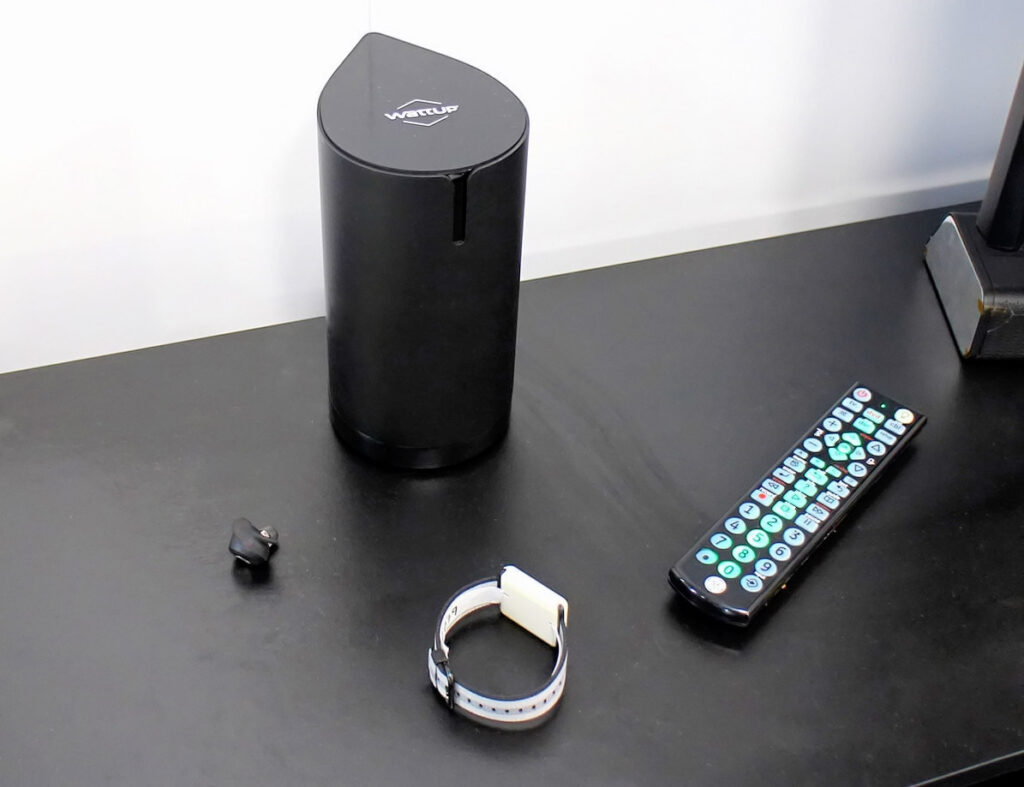Ideas more interesting than Smartphones in this years MWC

Its quite natural that the MWC is focused on smartphones and their peripheral devices, but nearly always other new technologies and products are showcased in this event that you cant put them into these categories. In this article, we will introduce you to several companies that brought interesting and exciting ideas to the MWC 2018.
PureLiFi
Scotish PureLiFi has attracted a lot of attention in recent years. The company at the MWC 2018 showed its receiver technology integrated into a Samsung Galaxy S5 and a Dell laptop.
While the frequency spectrum is severely under pressure, the ability to complement Wi-Fi networks with Li-Fi systems has become a valuable asset. The connection is currently capable of providing a bandwidth of 42Mbps and allowed the S5 phone to play a stream of video without any problem.

The receiver of this technology is quite big, so it’s easier to integrate into a laptop than a smartphone, but the firm is working on further miniaturization. It seems that we’re not far from miniaturization and integration of such systems in smartphones, and we can hope that flagship phones can connect to your home network via Li-Fi within the next three years.
Elliptic Labs
Elliptic Labs, a pioneer in utilizing ultrasound in Gadgets, has already shown how this technology can replace proximity sensors in handsets, turning on device’s display when you get your hand or face close to it. This idea was used on the Mi Miami’s smartphone and allowed designers to reduce screen margins.
Elliptic Labs has unveiled its latest design in MWC 2018, which allows you to control an Smart light and speaker with simple gestures that work at a close distance. By double tapping on the palm of your hand, you can enable Amazon’s Alexa, and a single hit will disable it. All of this is done without having to touch the speakers or say a word. You can also increase the brightness of the light by holding your hand on one side of the speaker, or lower it by holding your hand on the other side of the speaker.

The devices presented by this company are still prototypes, but we can hope that such capabilities will soon be implemented in real products. The lack of need for verbal commands lets smart devices be available to a broader range of users at more places in the world.
Energetic
For years, high-end smart devices support wireless charging, but the idea of a truly wireless charging can be much more exciting. Imagine charging your phone when it’s in your pocket or your smartwatch while it’s still on your wrist. Undoubtedly, getting rid of the charging pads and cables is great, but the possibility of charging from an average distance is still in the experimental stage, and for now, we have to wait for the commercialization of its solutions. However, Energous at the MWC this year showed that this wouldn’t take much longer.
The company presented a prototype of an intelligent speaker that acts as a “transmitter” and could send the power through radio frequencies into a handset, a smartwatch and a pair of wireless earbuds with a maximum distance of one meter. The upper part of the speaker acts as a touch charging pad, just like a Qi charger.

Energous has received the FCC approval, which indicates that the technology used in this product is completely safe for human health.
Ossia
Ossia is another company that operates in the mid-range wireless charging. The technology of this company provides power supply via radio frequencies in the same 2.4 GHz spectrum of Wi-Fi, but in a different channel so there is no interference between them. The power receiving device sends a signal that reflects from surfaces such as walls, tables, and windows, but is absorbed by human body and liquids. The transmitter replicates the successful signals’ path to send power and checks these paths 100 times per second so that don’t affect the people in the environment.

In an Ossia experiment at the show, two transmitters at one end of the room could turn on a receiver that was at the other end of the room. Transmitters are large and can send about 10 watts of power to the wireless devices, but the receiver only gets something about one watt. This rate can be increased by using multiple transmitters. Although the charging rate decreases with getting further from the transmitters, this system can provide wireless charging even at a distance of 3 meters.


